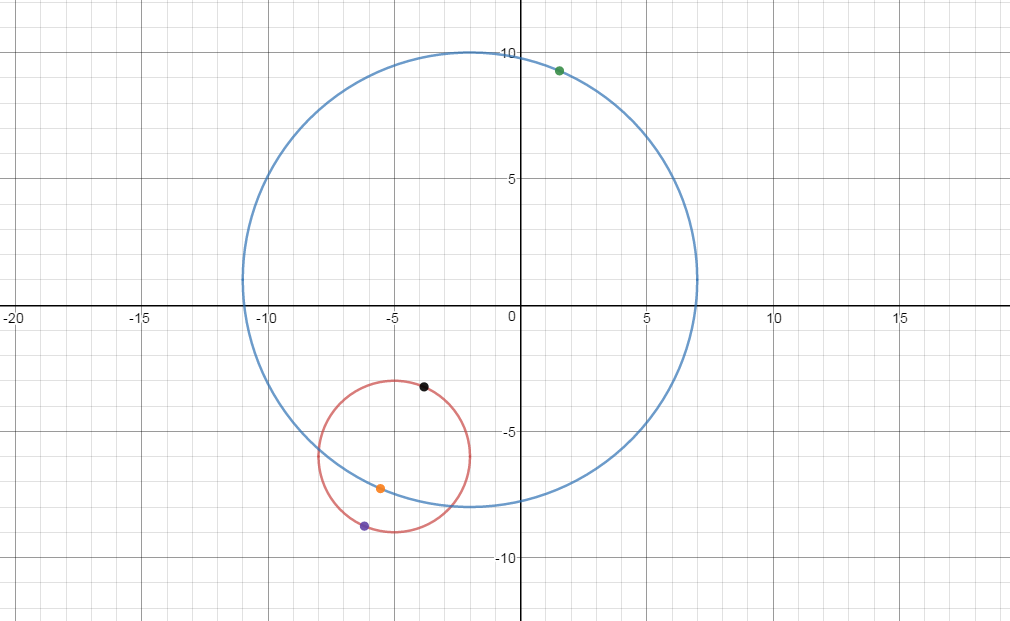Two circles have the following equations #(x +5 )^2+(y +6 )^2= 9 # and #(x +2 )^2+(y -1 )^2= 81 #. Does one circle contain the other? If not, what is the greatest possible distance between a point on one circle and another point on the other?
1 Answer
The circles intersect but neither one of them contains the other.
Greatest possible distance
Explanation:
The given equations of the circle are
We start with the equation passing thru the centers of the circle
Using two-point form
After simplification
Solve for the points using first circle and the line
One point at
Another at
~~~~~~~~~~~~~~~~~~~~~~~~~~~~~~~~~~~~
Solve for the points using second circle and the line
One point at
Another at
~~~~~~~~~~~~~~~~~~~~~~~~~~~~~~~~~~~~~~
To compute for the farthest distance
Kindly see the graph

God bless .... I hope the explanation is useful.
